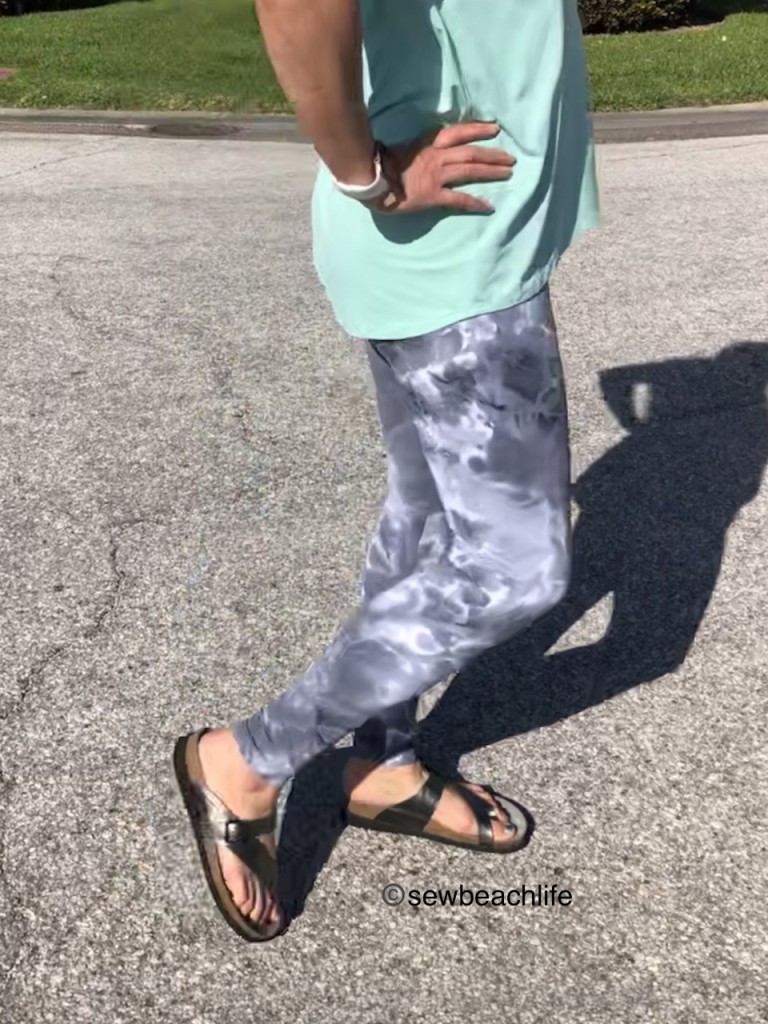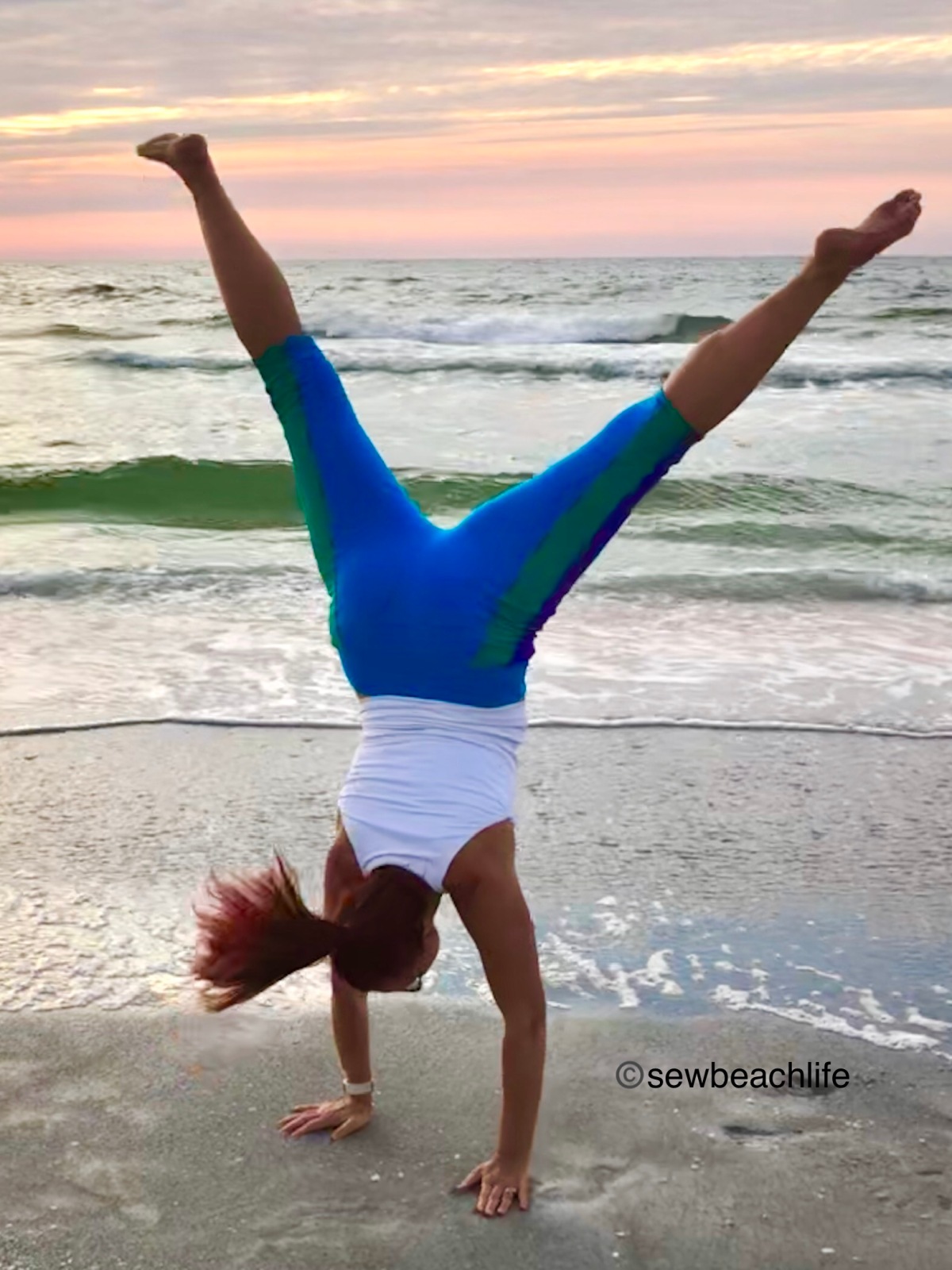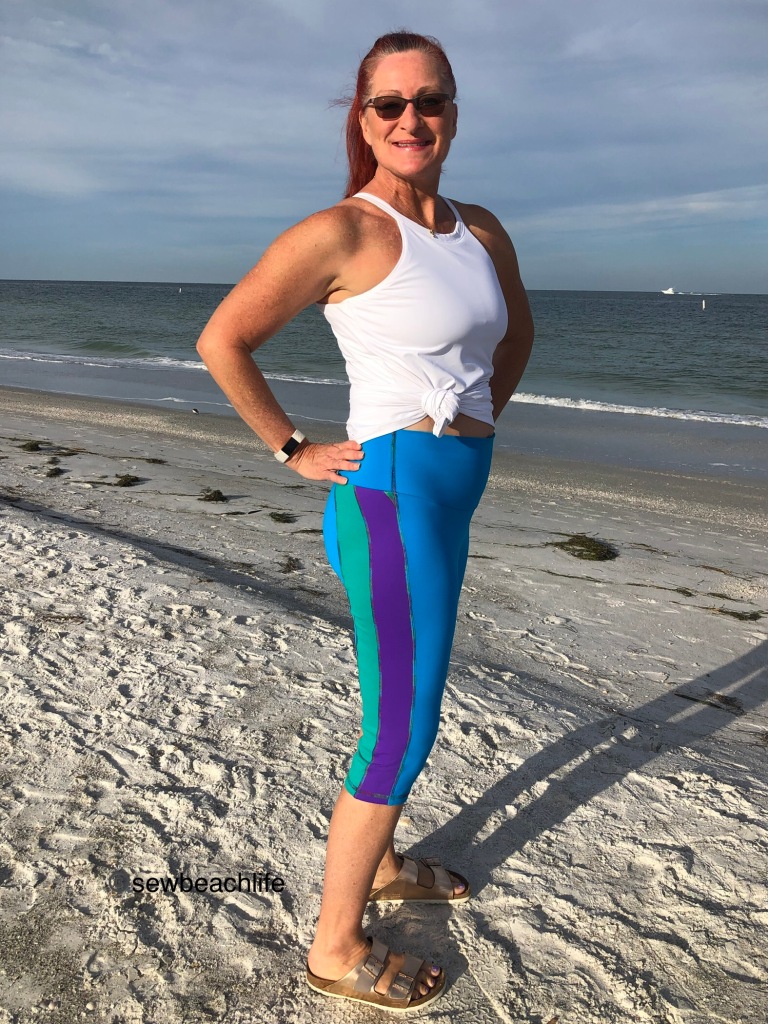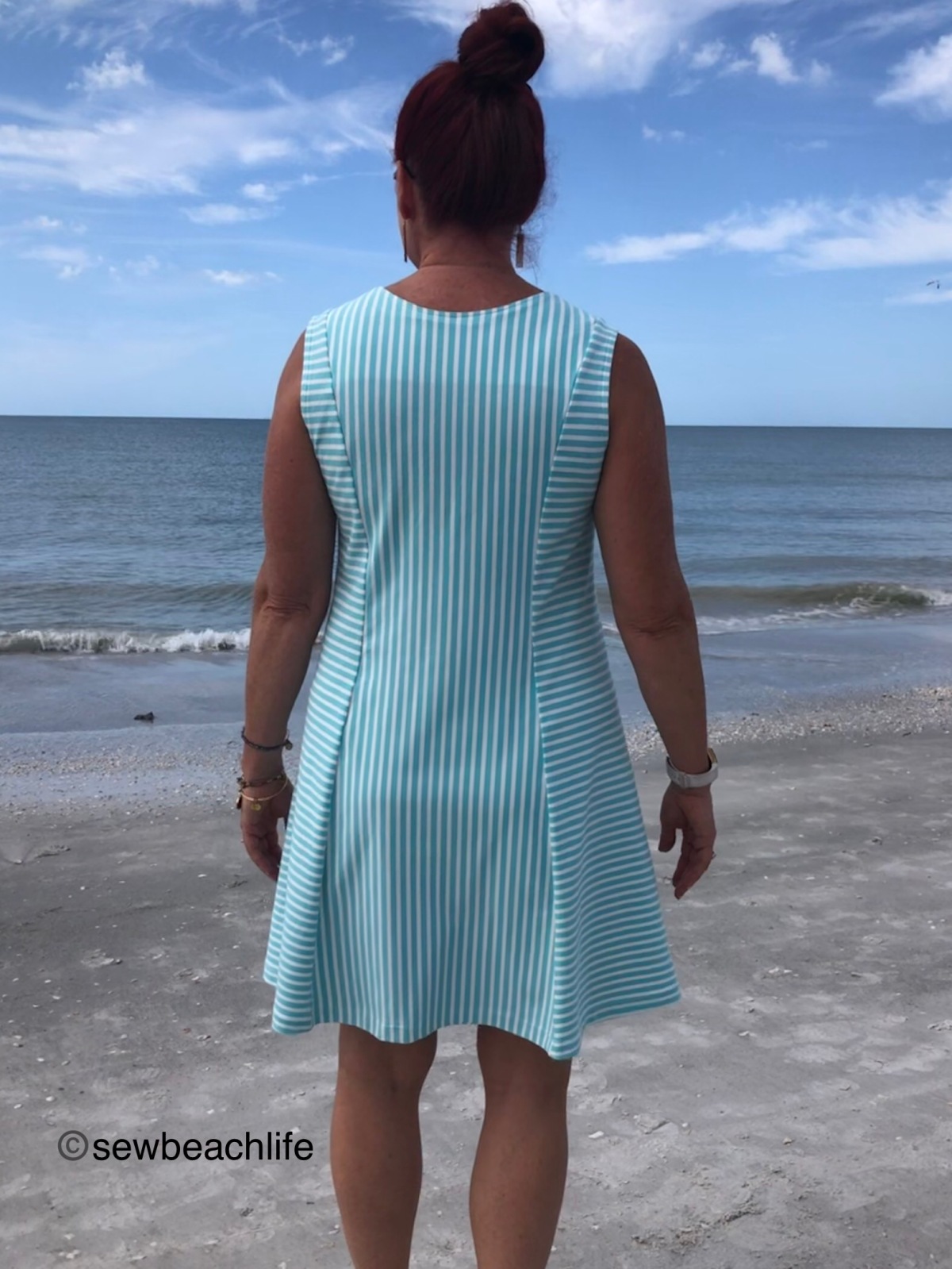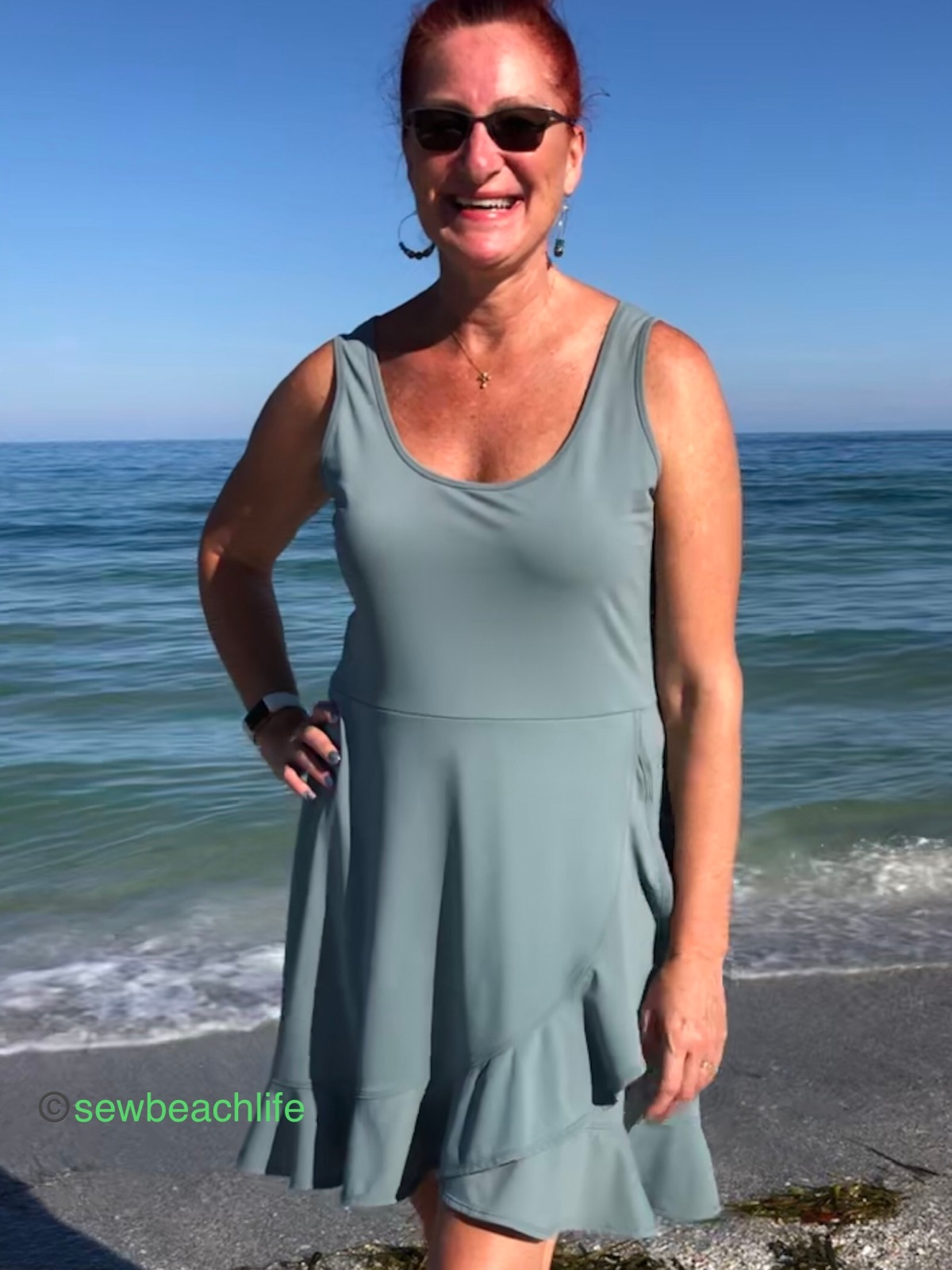I’m not generally what one would call a “trendy” person. My fashion style tends toward “comfortable classic”. But I’ll tell you, the rib knit cami tanks I see everywhere from yoga class to the grocery store and whenever I am out and about were talking to me. And lo and behold, GreenStyle put the Cami Tank into testing! 🙂
I love testing for GreenStyle, because Angelyn includes lots of options and takes perfecting the fit of her patterns seriously. Let’s start with the options: cropped, waist, and hip length; skinny or wide straps (with lots of strap placement options); and an optional shelf bra with an optional bra cup liner. Whew!
Let’s get down to the fit. The cropped and waist length versions are fitted and body skimming, as you would expect. But the hip length, ah, it is that wonderful blend of fitted at the bust, with a little more room at the waist and hips.

I don’t normally like shelf bras, because they aren’t usually supportive enough for my tastes. I used a nylon/spandex tricot for my shelf bra and was pleasantly surprised at the amount of support it offers.

On to the big (busted) question. How do I decide whether to use the included full bust adjustment pattern piece? As a D+ bra cup woman whose full bust is 7″ larger than my underbust, technically, my measurements put me in the FBA. But here’s the thing- it depends on where your bust fullness is.
So, during testing of version 1 of the pattern, I tried the FBA pieces. And they worked great for the women with perky, full, round busts. But I am a Grandma who nursed my children way back in the day, and time and gravity have done their thing. My bust is fuller at the bottom than the top.

The photo makes it super obvious and shows me that the fullness in the pattern isn’t where my fullness is. This is not the fault of the pattern. The average person with a similar difference in full bust and underbust measurements would probably benefit from the FBA pieces. As a sewist, I have long known that I am longer from shoulder to bust point than average. One of the many reasons that I love GreenStyle patterns is because they actually fit me in the armscye. Have you tried patterns from other companies and been super annoyed because they cut into your armpits?
One of the best benefits of sewing is that you can make garments that fit your body. So I skipped the FBA, and instead graded out one size at the armscye. So the front neckline/shoulders are one size, and I just traced out to the next size under the arm.

And it worked perfectly. However, I did a couple of things wrong. 😦 First of all, I accidentally cut my straps over an inch too short. I figured I’d be fine since the straps are plenty long. However, I also didn’t use the shelf bra for the mint colored tank, because I knew that the wide straps would hide my bra straps. That’s all well and good, but the bra is kind of a padded push-up, and therefore makes my boobs even bigger. Ugh! I need to seam rip and remove the too short straps and cut longer straps. After making it, I sorely regretted not having the built in bra. So, word to the wise- just use the shelf bra!
Let’s talk straps. The skinny straps are cute, but let’s get real. I need the support of wider straps. So I used wide straps for every version I made. Binding and straps can seem challenging, but honestly, if you follow the tutorial, you can do it. Since I wanted the maximum width straps possible, I didn’t do the traditional double fold binding method. I did the faux method. I started by serging one long edge of my straps before attaching them. Knits don’t fray like wovens, but I find that serging the edge (with the differential turned up to 1.3) gives me a sturdier, more stable edge when I turn it under to coverstitch.
I also chose to add clear elastic along the strap, across the back, and up the other strap while serging the binding to the tank. To make life easier, I basted the binding to the tank before I serged it. That way I didn’t have to worry about aligning anything or deal with pulling my pins when serging.

I think that having elastic continue across the back helps the top lay smooth and not get pulled up out of shape by the straps.

Because I serged the binding on with a 1/4″ seam allowance (rather than trimming off 1/8″ as I serged) I gave myself maximum strap width by just pressing the seam allowance up, and folding the strap over to not quite meet the edge. I use plenty of pins when I do binding so that everything stays smooth and in place. It really helps me keep everything an even width.

I can be totally trendy, in a comfortable classic style. Who wouldn’t want that? It’s destined to become a summer basic, and then worn all fall and winter with a jacket or cardigan.

The details: here is the link to GreenStyle Creations and the Cami Tank pattern. The blue and mint fabrics are a nylon/spandex athletic rib knit from JoAnn Fabrics. The marble print leggings worn with the blue tank are the Simpatico Leggings, blogpost here. The black shorts worn with the mint tank are the Chelsea Pants, cut at shorts length, posted here. The swim bottoms worn with the mint tank are the Waimea Swim Bottoms, posted here. The teal fabric in the FBA version is nylon/spandex tricot from Phee Fabrics. I also used navy nylon/spandex tricot for the shelf bra in the blue Cami Tank. I really should cut out another one in this fabric, and maybe leave the side seams open from below the shelf bra as a fun hack to the tank pattern, since I kind of like the look! I should also note that GreenStyle carries athletic rib knit and lots of other pretty fabrics. 🙂
The links to GreenStyle are affiliate links, which means that at no extra cost to you, I may receive a small commission if you purchase through my link. As always, I only give my honest opinion. After all, it is my blog, which represents me! Thank you for reading and sharing my love of creating, sewing, patterns, fabric, and making beautiful well-fitting garments! ❤




